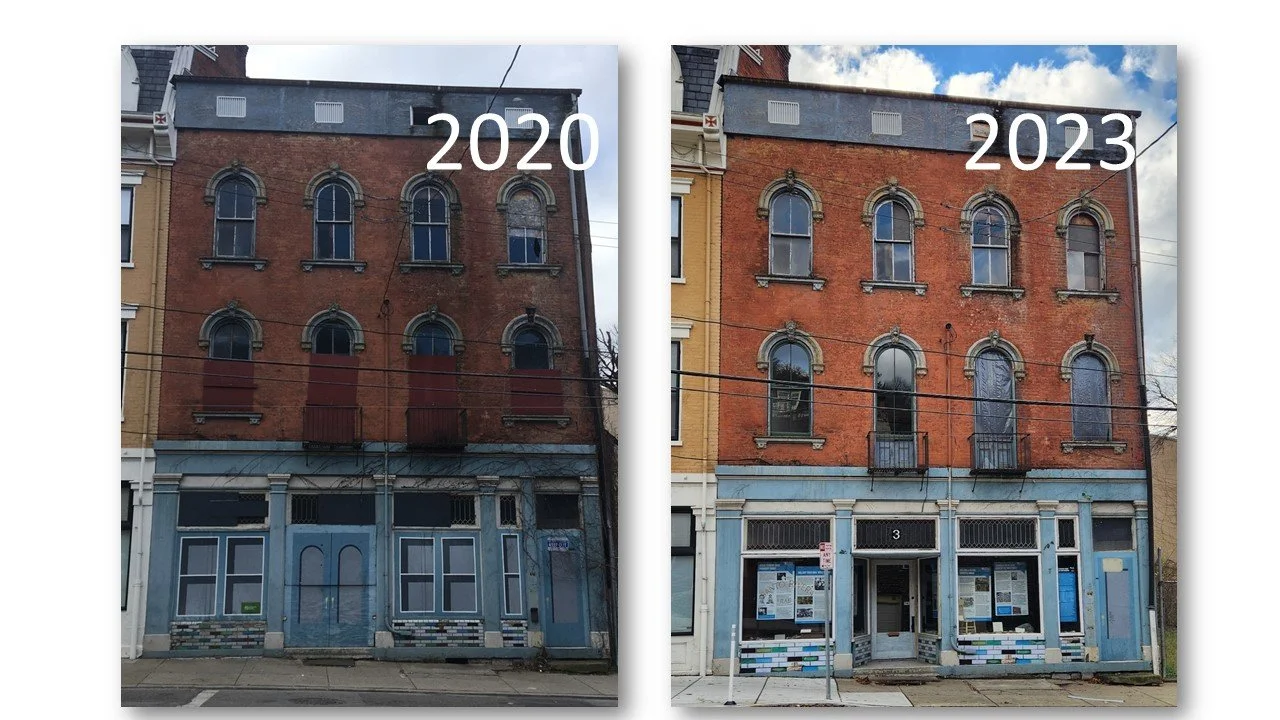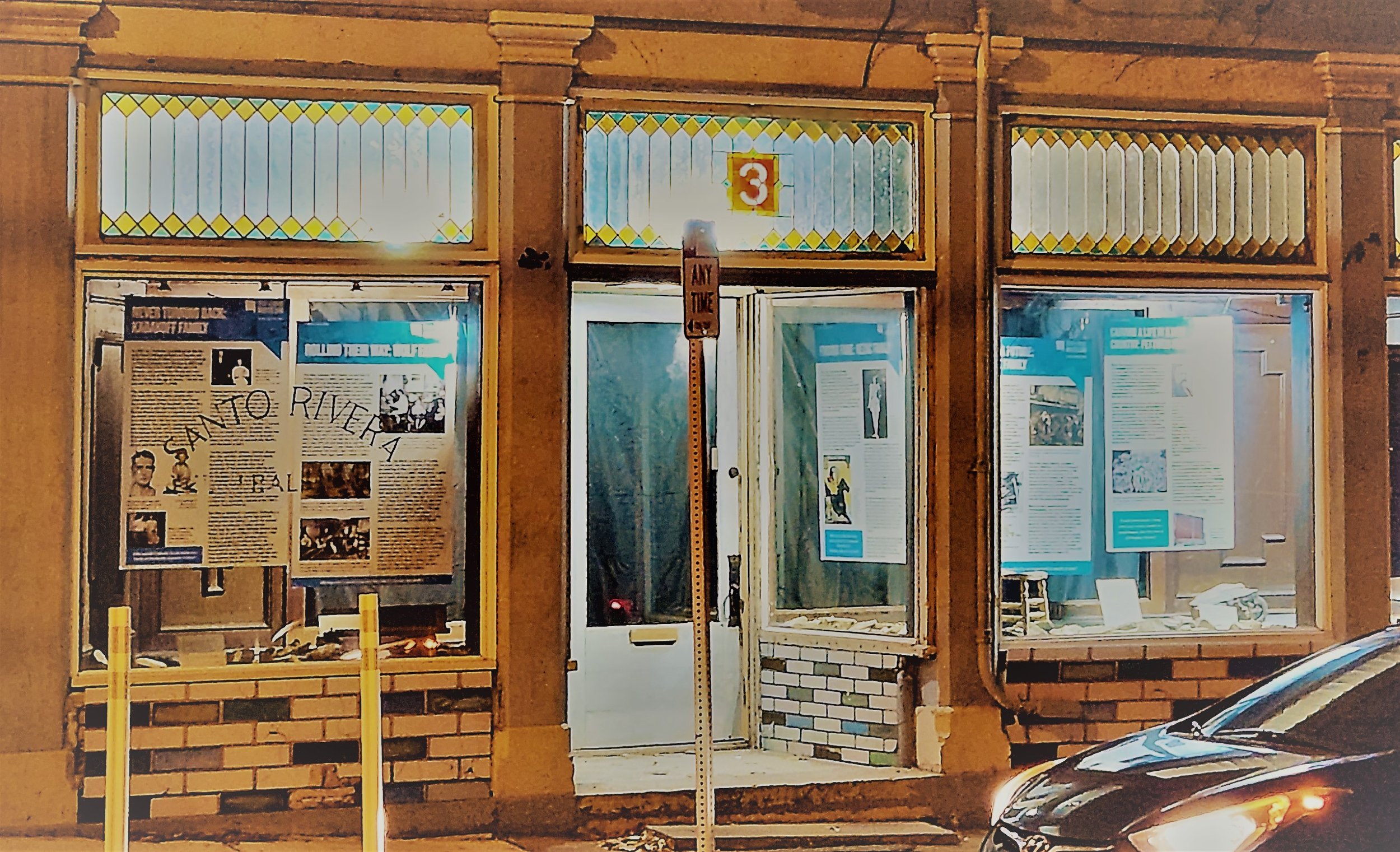
The Museum’s Future Home
Since the 1860s, the property at 3 West McMicken in Cincinnati’s historic Over-the-Rhine neighborhood has been home to over 150 families and at least 500 individuals. Today this building and the one behind it are owned by the Over-the-Rhine Museum. The museum was founded in 2015 to inspire understanding and respect for the people who have created and lived in Cincinnati’s historic Over-the-Rhine neighborhood by working with community members and visitors to uncover, present, and preserve their stories. The core of our work will be the interpretation of these two buildings, telling the stories of real people that lived here.
Museum Site Highlights
» Two-building complex, 5,714 sq ft in total, fully stabilized and ready for restoration
» Room for seven recreated historic apartments with additional flexible spaces, offices, a gift shop, and rotating exhibition space.
» Located just one block from Findlay Market and a streetcar stop, directly across from the new Findlay Community Center, and within easy walking distance of TQL Stadium.
RESTORING 3 WEST MCMICKEN
The first building on this lot was constructed just before the Civil War, when Cincinnati reigned as the sixth largest city in the nation and German Americans built Over-the-Rhine into a densely populated German-speaking enclave. Over 144 years of occupancy this two-building complex has been home to urban Cincinnatians from a range of cultures, including a diverse group of European immigrants, migrants from Appalachia, and African Americans displaced by urban renewal in Cincinnati’s West End. The Over-the-Rhine Museum will tell their stories.
Our buildings sit on a lot purchased by stone carver Carl Leopold Fettweis. He built the first building at 12 Findlay Street in 1862 and the building on McMicken by 1870. For their first ninety years, these buildings had just two owners, both of whom lived here with their families while renting out unused space to tenants. In the last seventy years, the buildings have had seven additional owners.
We’re restoring these buildings to become our permanent home, where the stories of families who lived there will bring the neighborhood’s past to life. Inspired by New York’s Lower East Side Tenement Museum, our space will include curated apartments, a storefront for events, education, and exhibitions.
Imagine stepping into the future Over-the-Rhine Museum. You’re not just observing artifacts; you’re walking through the actual homes of past residents. In one apartment, a docent shares the story of a German immigrant family in 1865, revealing how they adapted to their new home. In another, you see the living quarters of Appalachian migrants in the 1950s. Through immersive, docent-led tours, you’ll uncover the stories of women, people of color, and working-class families, understanding their struggles and triumphs. School groups will fill these rooms, engaging in programs that connect history to civic engagement, using these spaces as living classrooms. These experiences will foster empathy, spark dialogue, and illuminate the complex history of Over-the-Rhine, making it a vital resource for understanding our shared past and shaping a more equitable future.
INDIVIDUAL FAMILIES, UNIVERSAL STORIES
Fettweis - 1865 Family home with themes of German immigration, Civil War, small business, and civic engagement
Rezac - 1894 Emma Rezac birth room with themes of childbirth, midwifery, traveling entertainment and circuses, factory work
Moerlein - 1915 Family apartment with themes of WWI, anti-German hysteria and discrimination, chain migration, women and work
Kabakoff - 1944 Family apartment with themes of WWII, Jewish immigration, persecution, mental health, family-owned businesses
Smithers - 1958 Family apartment with themes of Appalachian identity and stereotypes, urban Appalachian life, entrepreneurship
Rachel - 1992 Family apartment with themes of African American migration, urban renewal, interracial relationships, childhood disease, health disparities
Vacant Room - 2008 Themes of poverty, homelessness, youth disillusionment, gentrification and neighborhood change, and graffiti
LEARN ABOUT OUR PLAN!
As part of our efforts to promote our July 29th, 2023 Plan Unveiling event, plan participants were invited to discuss the work to date with WVXU’s Cincinnati Edition correspondents. Click below listen to the quick conversation focused on how the plan will help visitors step back in time through the power of historic preservation.






